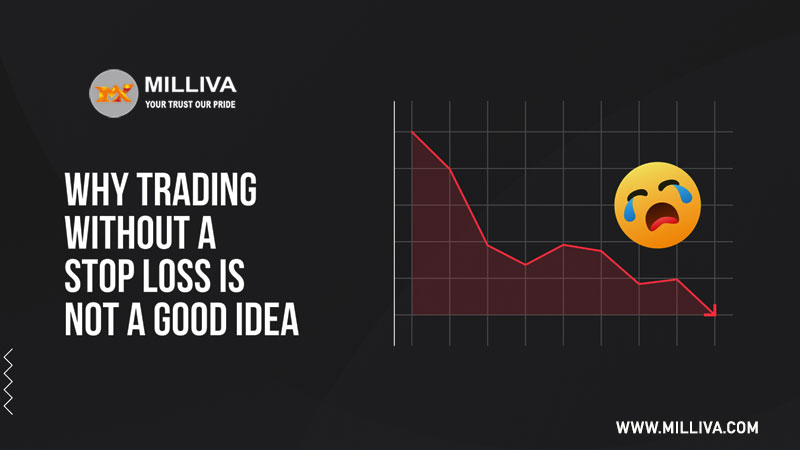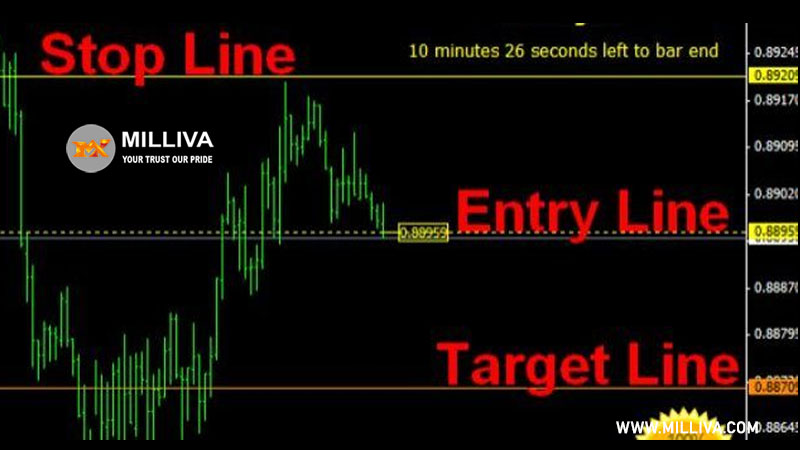Purpose Stop-Loss In Forex Trading

![]()
Once a transaction is showing a moderate profit, a trader will frequently alter the stop-loss order.
Moving it to a position that protects a portion of the trader’s winnings.
Trailing stops used by traders to automatically move their stop-loss order to a higher level when the market price rises.
Most trading systems make it simple to set up trailing stops. The trader merely specifies how many pips, or dollars, they want the stop order to lag behind the market high.
Orders are an important instrument for traders’ money management, but they do not give a 100% guarantee against loss. Market opens with gap below a trader’s stop-loss order order filled around the starting price, even if that price is substantially below the set stop-loss level.
Stop-limit orders are similar to stop-loss orders, but they have a price limit at which they will execute, as the name implies.
A stop-limit order specifies two prices: the stop price, which converts the order to a sell order, and the limit price. Instead of being a market order to sell, the order transformed into a limit order that will only execute at the limit price or better.
What is the Definition of a Stop Loss?
A stop loss order is a type of order used in forex trading to restrict a trade’s losses. A ‘stop order’ or a ‘stop-market order’ is another name for it.
A deal will be closed at a loss as a result of the order. It is a request from a trader to their trading business or broker to execute a trade when the market price is at a certain price level that is less favourable than the trader’s entrance price.
No forex trader wants to lose money, but because losses are unavoidable in trading, it is preferable to keep losses minimal and limit risk exposure.
How Do You Set a Stop Loss?
The first consideration for a trader is that the stop loss must be set at a reasonable level. This is a level that notifies the trader when their trade signal is no longer valid while also making sense in the context of the market structure. There are a few pointers on how to properly exit a transaction.

The first is to allow the market to reach your predetermined stop loss, which you set when you joined the transaction. Another option is to manually exit your trade if the price action has issued a signal against it.
It’s necessary to understand how to calculate stop loss and take profit in Forex, but it’s also important to note that exits might be completely emotional. For example, you may find yourself manually terminating a transaction because you believe the market will hit your stop loss.
In this situation, you’re feeling emotional because the market is moving against you, despite the fact that there’s no price action-based reason to manually exit.
Stop Loss
The ultimate goal of a stop loss is to help a trader stay in a trade until the trade setting is no longer relevant and the initial near-term directional bias is gone. When establishing a stop loss, a skilled Forex trader aims to position it at a level that allows the trade to move in the trader’s favour.
Essentially, while deciding where to position your stop loss, consider the reasonable level at which the market would have to go in order to show your trade signal incorrect.
Stop loss traders want to give the market room to breathe while also keeping the stop loss near enough to quit the deal as quickly as possible if the market moves against them. This is one of the most important guidelines for using stop losses and take profits in Forex trading.
Because they wish to trade a larger position size, many traders cut themselves short by placing their stop loss too near to their entry point. However, placing your stop loss too near to your entry point invalidates your trading advantage, because you should position your stop loss based on your trade signal and current market conditions, not on how much money you expect to gain.
As a result, your task is to establish your stop loss location before determining the size of your position. Furthermore, the placement of your stop loss should be based on logic. Allowing greed to lead to losses is not a good idea.
Example to Set Stop Loss
The ‘Pin Bar Trading Strategy Stop Loss Placement’ is the first strategy. On a pin bar arrangement, the most obvious place to position your stop loss is usually beyond the high or low of the pin bar tail.
The ‘Inside Bar Trading Strategy Stop Loss Placement’ is the second strategy example. An inner bar layout that is solely beyond the mother bar high or low is the most sensible place to position your stop loss in this case.
The ‘Counter-trend Price Action Trade Setup Stop Loss Placement’ is the third stop loss/take profit strategy example. The goal of a counter-trend trade setting is to place the stop loss just outside the setup’s peak or low, which suggests a probable trend change.
The ‘Trade Range Stop Placement’ approach is the following example strategy. Every trader regularly observes high-probability price action setups forming at the trading range’s edge. Traders should place their stop loss just beyond the trading range boundary, or on the peak or low of the setup traded, in such instances.
When studying how to use stop loss and take profit in forex, keep this in mind. For example, if we had a pin bar setup at the top of a trading range that was exactly under the trading range resistance, we would place our stop slightly outside the trading range resistance, rather than just over the pin bar high.
Stop Placement
‘Stop Placement in a Trending Market’ is the next approach to consider. We usually have two alternatives when a trending market pulls back or retraces to a level within the trend. The first approach is to position the stop loss just above or below the pattern’s high or low, or we may use the level and place our stop close below it.
Finally, the ‘Trending Market Breakout Play Stop Placement’ has arrived. This will broaden your understanding of take profit and stop loss in the Forex market. In a trending market, the market will commonly pause and consolidate in a sideways fashion after the trend makes a strong advance.
Large breakouts in the direction of the trend are common during such consolidation periods, and breakout trades can be profitable for traders. On a breakout trade with the trend, there are usually two possibilities for stop placement. Your stop loss might be placed near the 50% level of the consolidation range or on the opposite side of the price action setting.
It is better understood when practised, like with most things in life. If you haven’t yet opened an account with us, we recommend that you try our risk-free demo account first. With no money at stake, you can practise using both a stop loss and a take profit.

Visit us on: www.milliva.com






5 Best Tips for Better Money Management in Forex
05th Jul 2022[…] course, there are some drawbacks to employing stop losses. One of the most aggravating is seeing a stop loss activated just to have the trade reverse and hit […]
What is the Important Factors in Forex Trading Exit - Strategy
06th Jul 2022[…] must be implemented in such a way that they allow you to exit if a security breaches the technical reason you entered the deal. For traders who have been trained to put stops based on arbitrary parameters […]
Calculate Stop Loss in Forex Trading
06th Jul 2022[…] stop-loss order is a sort of order use in forex trading to restrict a trade’s losses. A ‘stop […]
What Are the Ways to Apply Trailing Stop Loss in Forex Trading
07th Jul 2022[…] trigger price for this stop-loss order is static. When a trailing stop-loss is employed, the stop-loss may change along with the […]
Harami Candlestick Pattern - Bullish & Bearish Patterns in Forex Training
20th Jul 2022[…] by placing a market order at the time of the break. A stop-loss order place above either the harami candle’s high or the long white candle’s high. By […]
1% Risk Rule - Key To Win Forex Trading
25th Jul 2022[…] using a percentage stop-loss, you can prevent losing more money than you initially put up. In other words, it’s expressly […]
Is Forex a Good Habit - Here is a Tips For You
26th Aug 2022[…] Trading losses are unavoidable. Even the most successful traders have bad days. Unfortunately, many inexperienced traders would rather be correct than lucrative, and utilizing stops would prove them incorrect. This may result in unmanageable losses and, as a result, blown accounts. You have no influence on market behavior, but you do have control over how much money you lose every trade. You may alter your stop losses by widening, tightening, or adjusting them, but you must always have them. […]
How to Trade the Head and Shoulders Pattern?
21st Nov 2022[…] you should make sure that you have a sufficient risk management strategy in place. Simply, the stop-loss order is typically place above the right shoulder for a topping pattern and is place below the right […]